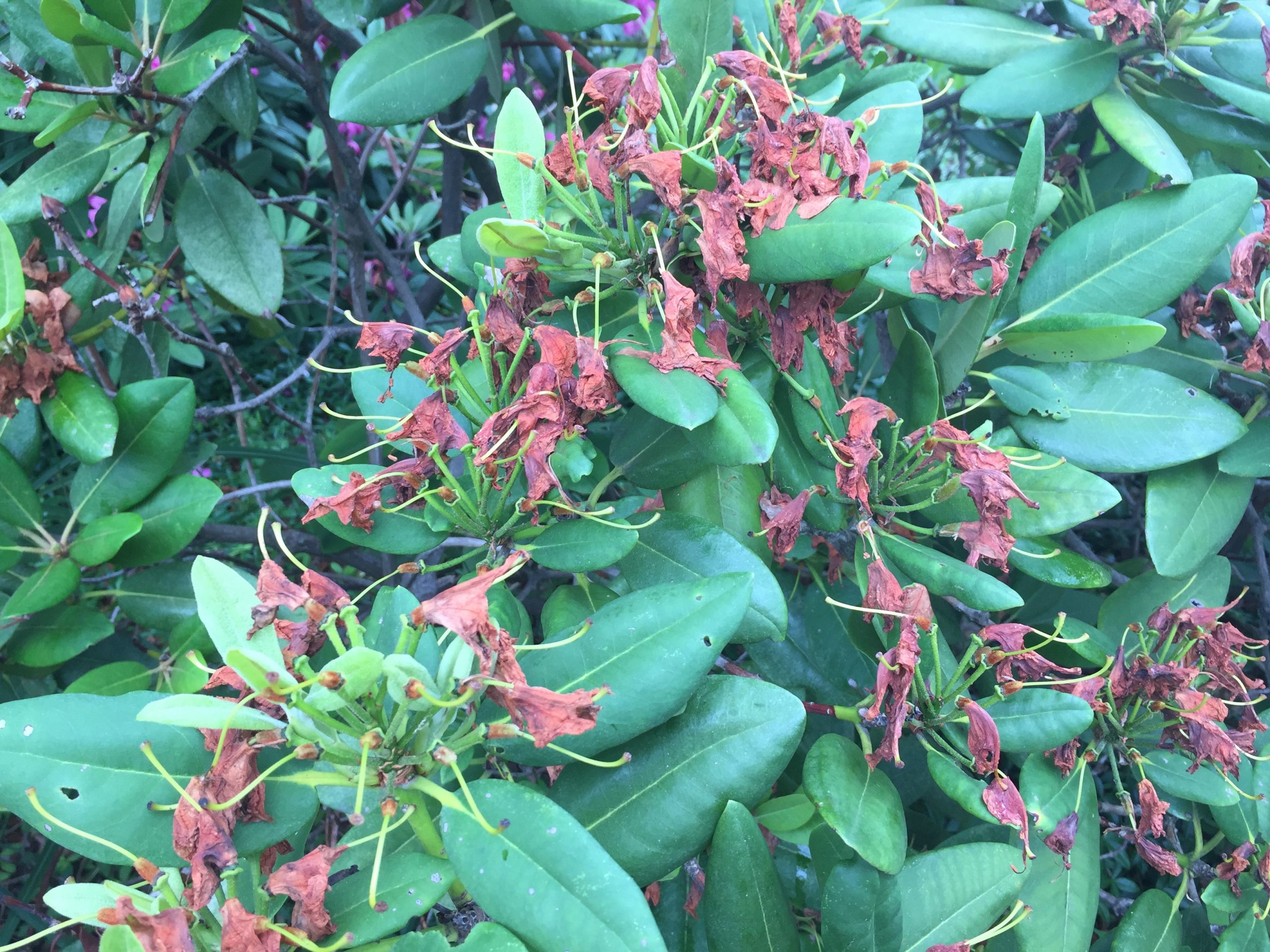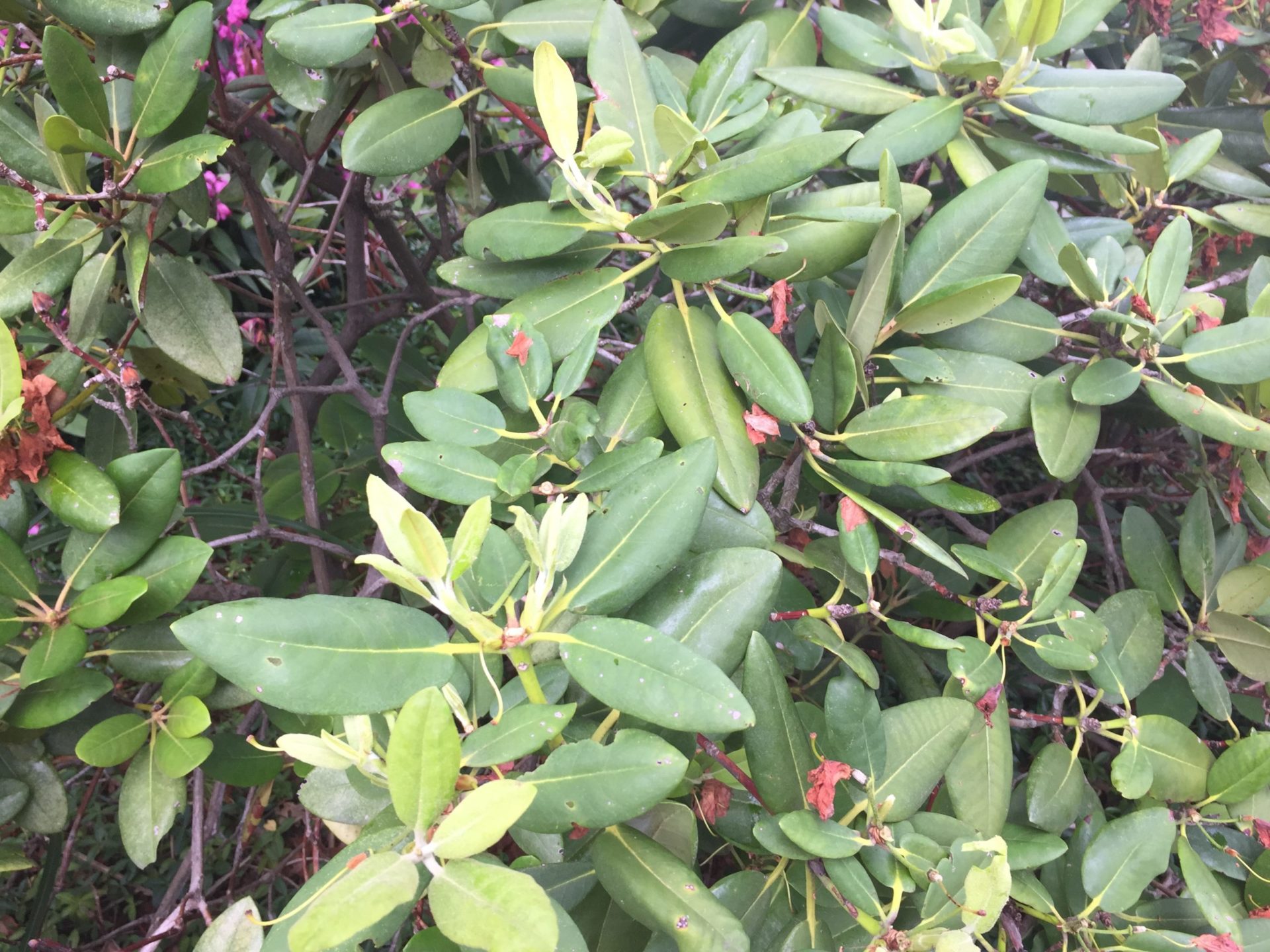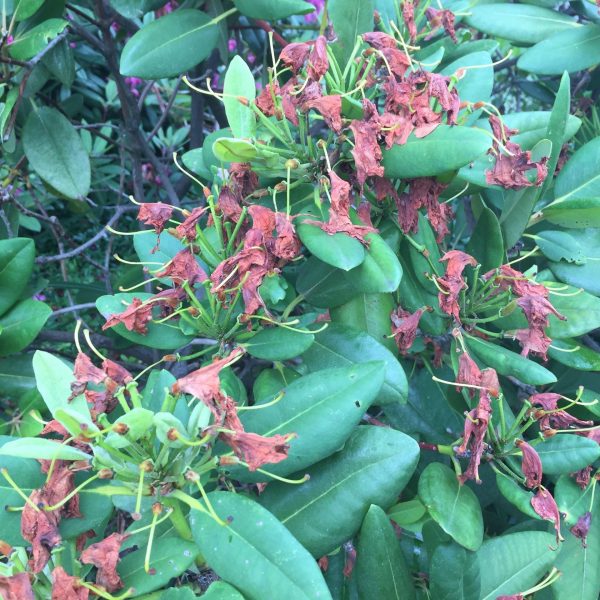Rhododendrons are such a significant component in many of this region’s gardens, and you likely have some in your yard. Can you recall such a spectacular display as we experienced this spring?! And now that they’ve finished blooming, some tasks that are effective and easy to accomplish will help assure your enjoyment continues next year.
When you visit your local garden center this time of year, you’ll likely see staff removing and discarding the spent flowers from many of the flowering plants, particularly annuals, they offer for sale. Horticulturists call this process “deadheading”. Deadheading surely enhances the appearance of the plants, and more importantly, it prevents them from forming seeds; it enables each plant to devote its energy to increased growing and forming new flowers.

Large-leaf rhododendrons and mountain laurel (Kalmia) can similarly benefit from deadheading. And it’s a simple task: let your fingers grasp and twist-off the entire seed-head at the tip of each flowering branch, taking care to leave the new growth shoots undisturbed. Don’t be overly concerned if some of the new shoots, leaves or branch-tip get removed during this operation—the latent growth buds will be stimulated and soon fill-in. The idea is to redirect the plant’s energy from seed-production into new growth. And the rhododendron (or Kalmia) will more than make up for the occasional loss of shoots by increasing its overall growth.
Seedpods tend to become more difficult to remove as they mature. And each cultivar differs in how tenaciously they hold-on to their seed-heads. Just as their flowers fade is the ideal time to do this, but even weeks later is still beneficial. And simply let the spent flowers drop beneath the plant—they eventually decompose and blend invisibly to become part of the mulch. The Early Rhododendrons (small-leaf types like PJM and Olga Mezitt) do not need deadheading because they set few seeds and are able to grow perfectly well naturally.

Growing up in a nursery family, deadheading was one of the annual chores I was expected to perform. And I must say, deadheading hundreds of rhododendrons and Kalmia each summer was one task I didn’t relish very much. But now that I’m a homeowner with a more limited number of plants to maintain, I get a real feeling of accomplishment seeing how much reward I get for investing a couple of hours.
Deadheading time is also a good opportunity to remove dead and damaged branches and prune to control the height/spread of each plant. If you are unsure about how to deadhead specific plants, or whether it’s worth the effort, check with the experts at your local garden center.







